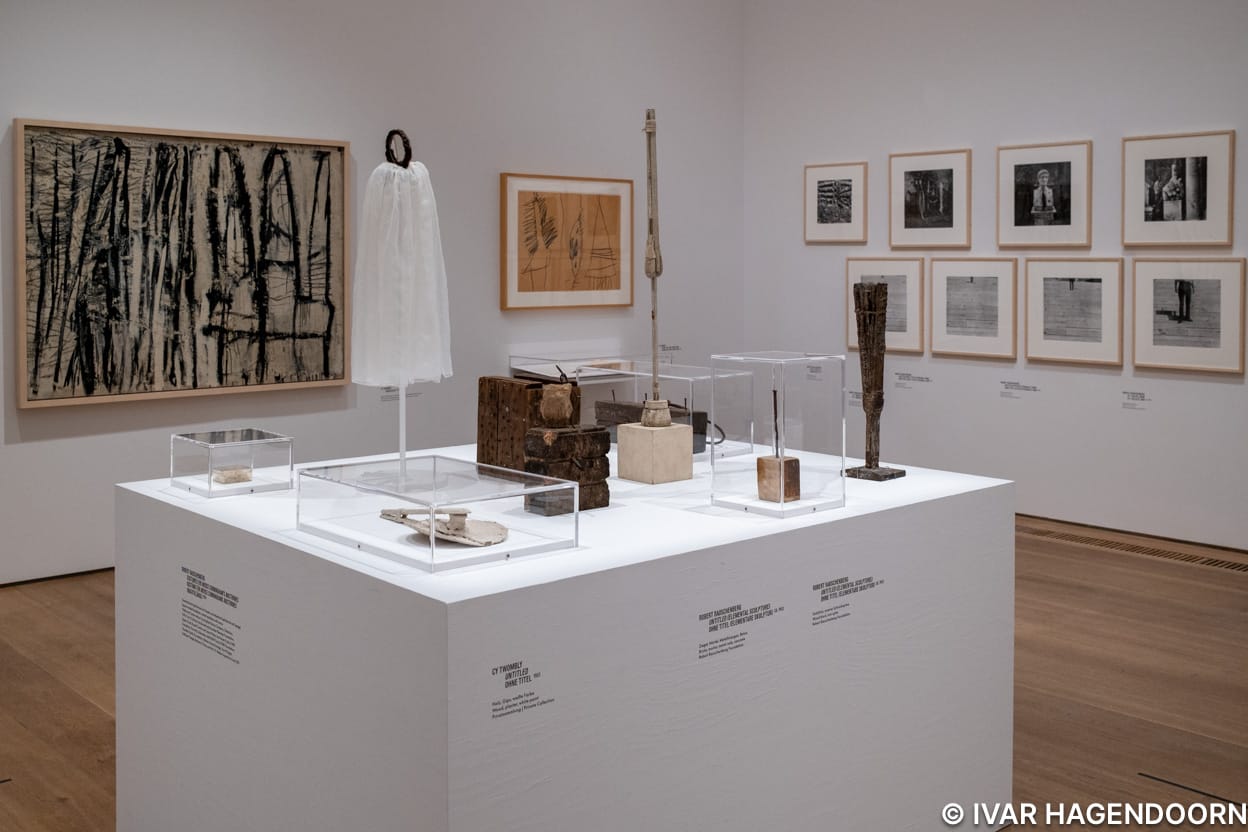
The Museum Brandhorst in Munich, in collaboration with the Museum Ludwig in Cologne, has organized an excellent exhibition exploring the profound artistic and personal relationships between five pioneering American artists who shaped postwar art: visual artists Jasper Johns, Robert Rauschenberg, and Cy Twombly, composer John Cage, and choreographer Merce Cunningham. Over the years these artists developed a shared aesthetic sensibility that influenced movements from Pop Art to Minimalism. Their collaboration began in the early 1950s at the legendary Black Mountain College in North Carolina, where they encountered former Bauhaus teachers and developed an interdisciplinary approach to art-making that would define their careers.
The group's collaborative spirit found its clearest expression through the Merce Cunningham Dance Company, founded in 1953, where each artist contributed their expertise—Cage as musical director, Rauschenberg as artistic advisor designing sets and costumes, and Johns assisting with various productions. The exhibition includes the musical scores, stage props and costumes of several performances as well as video excerpts allowing one to see how it all comes together. Their artistic approach was revolutionary, with Cage and Cunningham using chance operations to combine images, sounds, and movements. Personal relationships were equally intertwined with their artistic practice: Cage and Cunningham maintained a lifelong professional and romantic partnership, while Rauschenberg and Twombly were romantically involved in the early 1950s, and Rauschenberg and Johns later became a couple, working side by side until 1961.
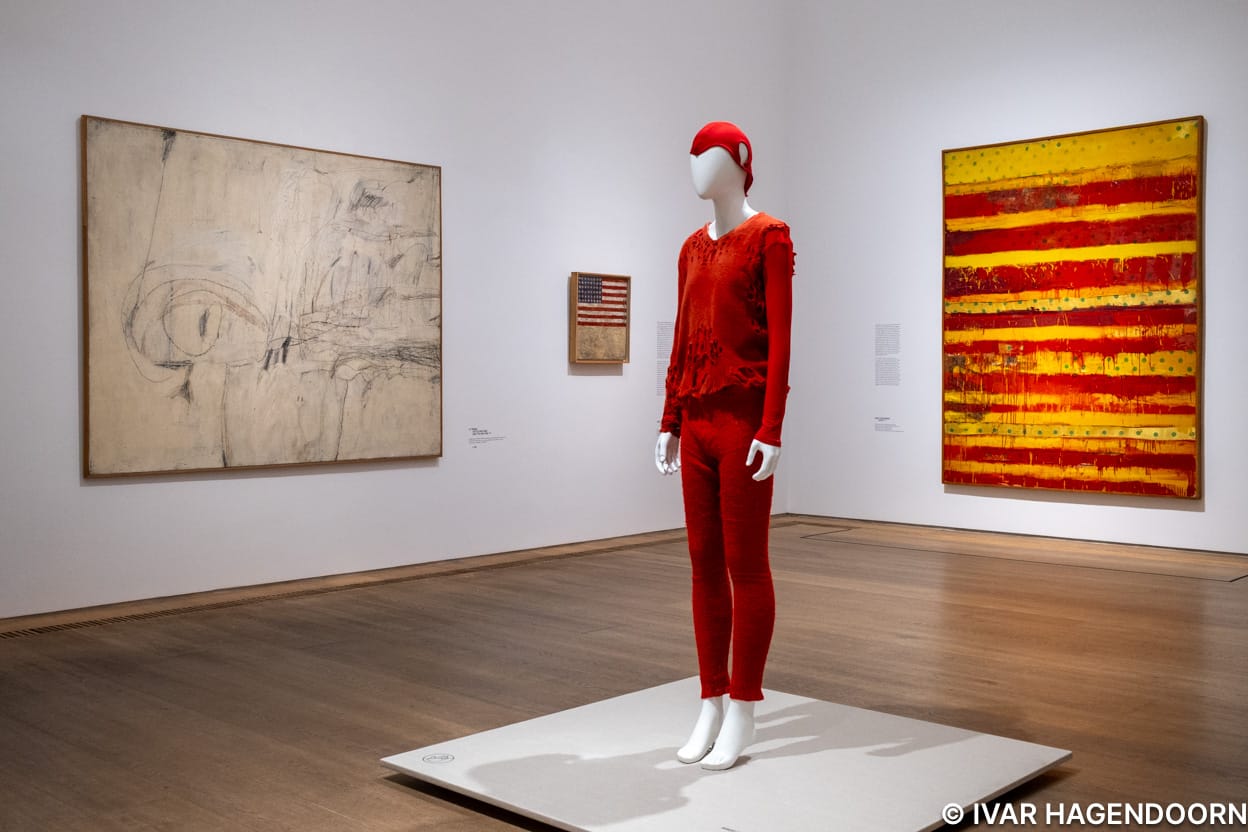
The political climate of the Cold War era profoundly influenced their work, as they created art during the McCarthy-era persecution of both suspected communists and queer individuals, a reality that directly affected several members of the group. Their works engaged with American power symbols, military imagery, and the technological advancement of the space age, with Rauschenberg creating works incorporating American symbols of power and Johns producing his iconic flags and targets of which the exhibition includes some superb examples. The space race particularly captivated Twombly and Rauschenberg, leading to works like Twombly's "Orion III" (1968) and Rauschenberg's NASA-commissioned "Stoned Moon" project (1969-70), which captured both the wonder and apprehension of the technological sublime.
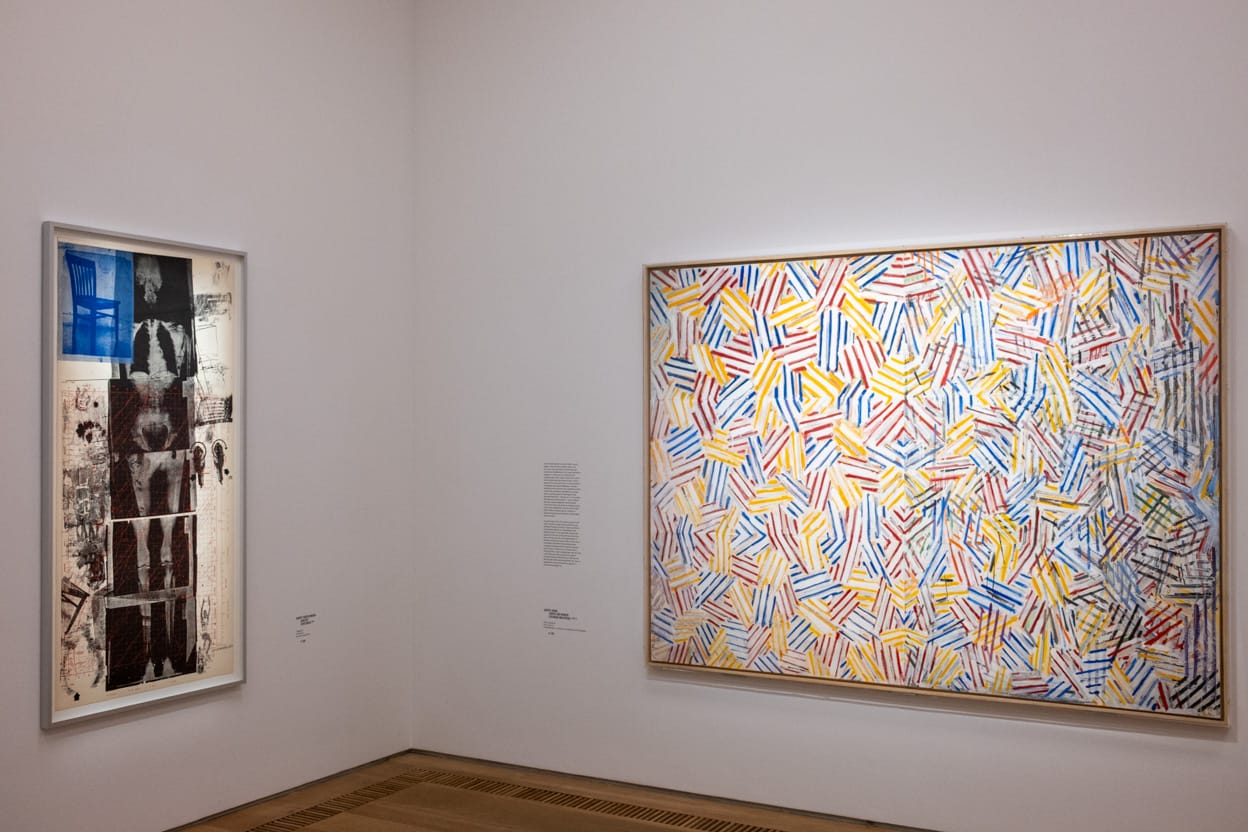
In the 1970s, the friends underwent a significant shift, withdrawing from urban art centers and pursuing more individual paths while occasionally rekindling collaborations. They moved to quieter locations, Rauschenberg to Captiva Island, Twombly to Italy, and the others to Upstate New York, yet continued to influence each other's work and occasionally collaborate.
The exhibition emphasizes the formative decades when their collaborative relationships were most intense. Their legacy lies not only in their individual achievements but in their demonstration that artistic innovation could emerge from deep personal connections and interdisciplinary collaboration. As Rauschenberg later reflected on their time together, they "worked totally committed, shared every intense emotion and, I think, performed miracles, for love only," encapsulating the spirit that made their artistic circle so transformative for postwar American art.
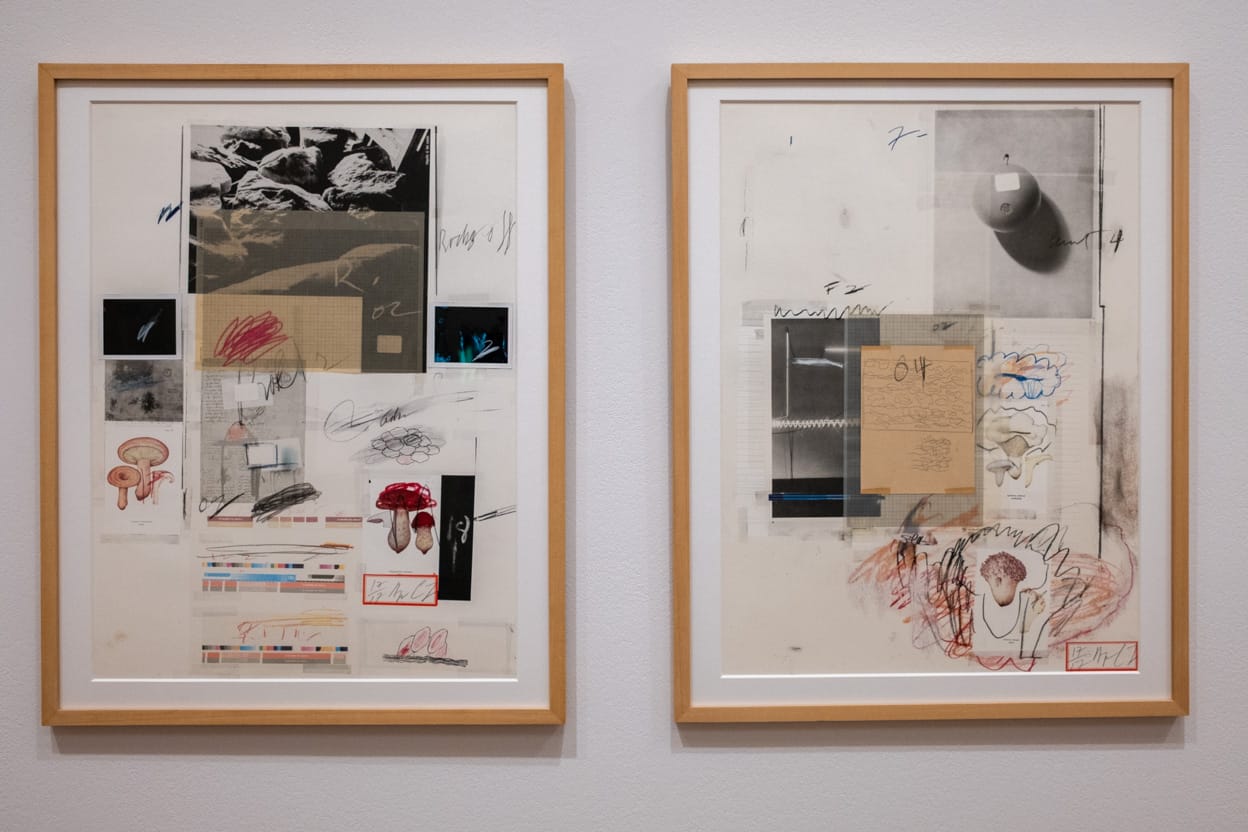
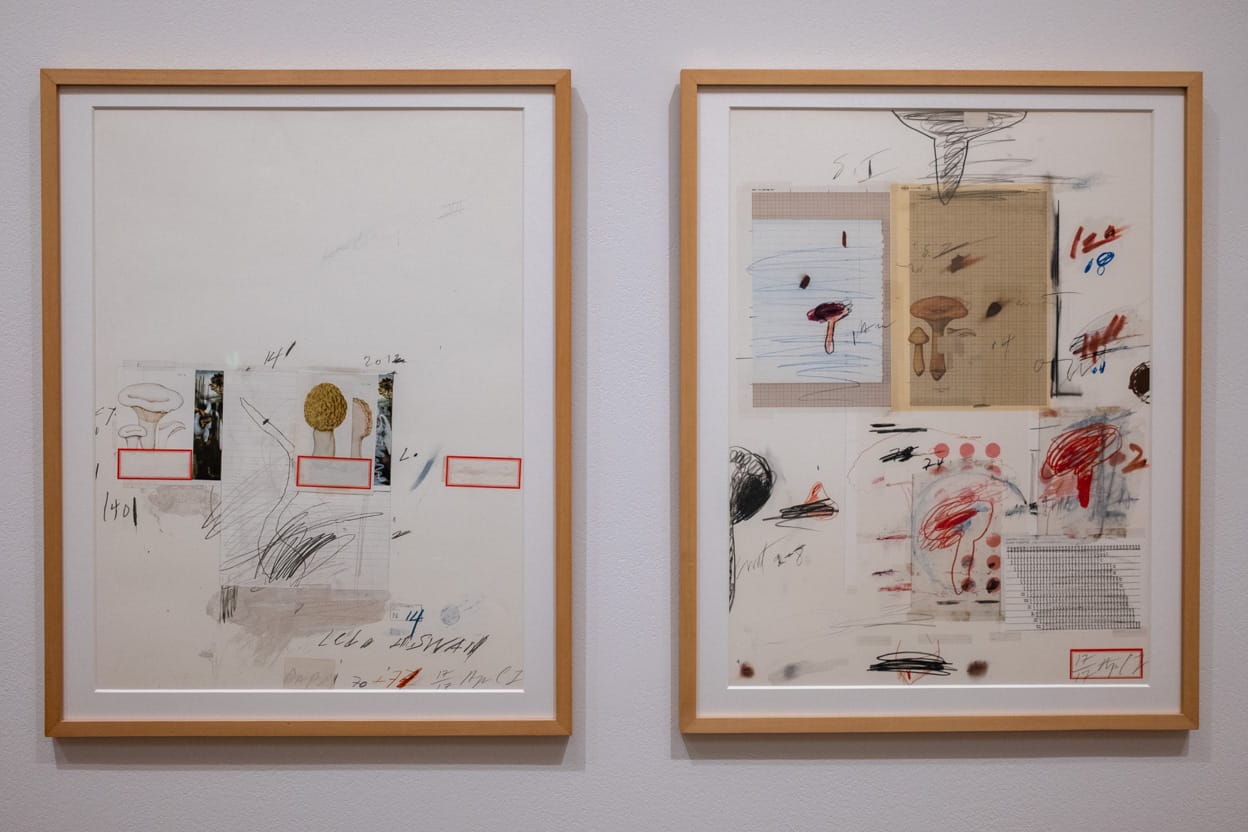
Cy Twombly, "Natural History, Part 1, Mushrooms" (1974)
Fünf Freunde / Five Friends is an amazing exhibition. Most exhibitions focus on the work of either Robert Rauschenberg and Jasper Johns or their place within Pop Art. I was delighted to see their work brought together in a single show. I particularly enjoyed seeing a generous selection of works by Cy Twombly, of whom the Museum Brandhorst has a large collection. This is a must-see exhibition, especially if you're interested in dance.
Fünf Freunde / Five Friends is at the Museum Brandhorst in München until 17 August 2025 and will travel on to the Museum Ludwig in Köln, where it will be on view from 3 October 2025 until 11 January 2026.